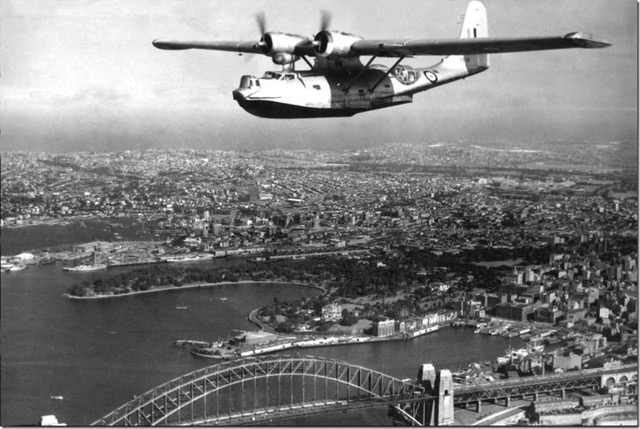
RAAF Rathmines Flying Boat Base, 1951
In 1951, the RAAF Rathmines flying boat base was the starting point for a notable aviation event involving pilot P.G. Taylor and his aircraft, the PBY Frigate Bird II. Taylor was conducting a test flight for the Jet Assisted Take-Off (JATO) bottles. This technology was crucial for enhancing the take-off performance of aircraft, especially when heavily laden.
In March of that year, Taylor departed from Rose Bay on an ambitious survey flight aimed at scouting a future airline route to South America. His journey was set to conclude in Valparaiso, Chile, with stops at several islands along the way. Notably, his route included Tahiti and Easter Island.
Easter Island Challenges
Landing on Easter Island posed significant challenges, as it required touchdown in the open sea. After fully refuelling, the JATO bottles were essential for the aircraft’s take-off. During this leg of the journey, a sudden storm struck, exacerbating the already difficult conditions. Amidst the chaos, Taylor was washed overboard. Despite this harrowing incident, the crew managed to complete the flight successfully and eventually returned to Sydney.
P.G. Taylor’s Heroic Deeds
Patrick Gordon “Bill” Taylor was already a celebrated aviator by this time, renowned for his bravery and ingenuity. One of his most famous exploits occurred in 1935, during a flight in the Southern Cross, where he demonstrated extraordinary heroism. Halfway to New Zealand, the aircraft’s right-hand engine failed, causing a critical drop in oil pressure in the left-hand engine. Under the command of Captain Charles Kingsford Smith, Taylor performed six perilous trips outside the aircraft. Each time, he carried a thermos full of oil, transferring it from the dead right-hand engine to the functioning left-hand engine, all while precariously standing on the struts of the plane. This act of bravery ensured the crew’s safe return to Sydney on the remaining two engines.
Legacy and Recognition
P.G. Taylor’s extensive flying career spanned both World War I and World War II, marking him as one of the most experienced and daring pilots of his time. Despite his remarkable contributions to aviation, his story remains relatively unknown today. More about his life and achievements can be explored through sources like the Australian Dictionary of Biography.
Upon his successful return from the Chilean expedition, Australian Prime Minister Robert Menzies gifted the Catalina flying boat to Captain P.G. Taylor in recognition of his accomplishments. Today, this historic aircraft is proudly displayed at the Powerhouse Museum in Sydney, serving as a testament to Taylor’s legacy and the pioneering spirit of early aviation.




RAAF Rathmines became the recruit training base 1959, ?
I did my rookies there & graduated 29 -Feb-1960